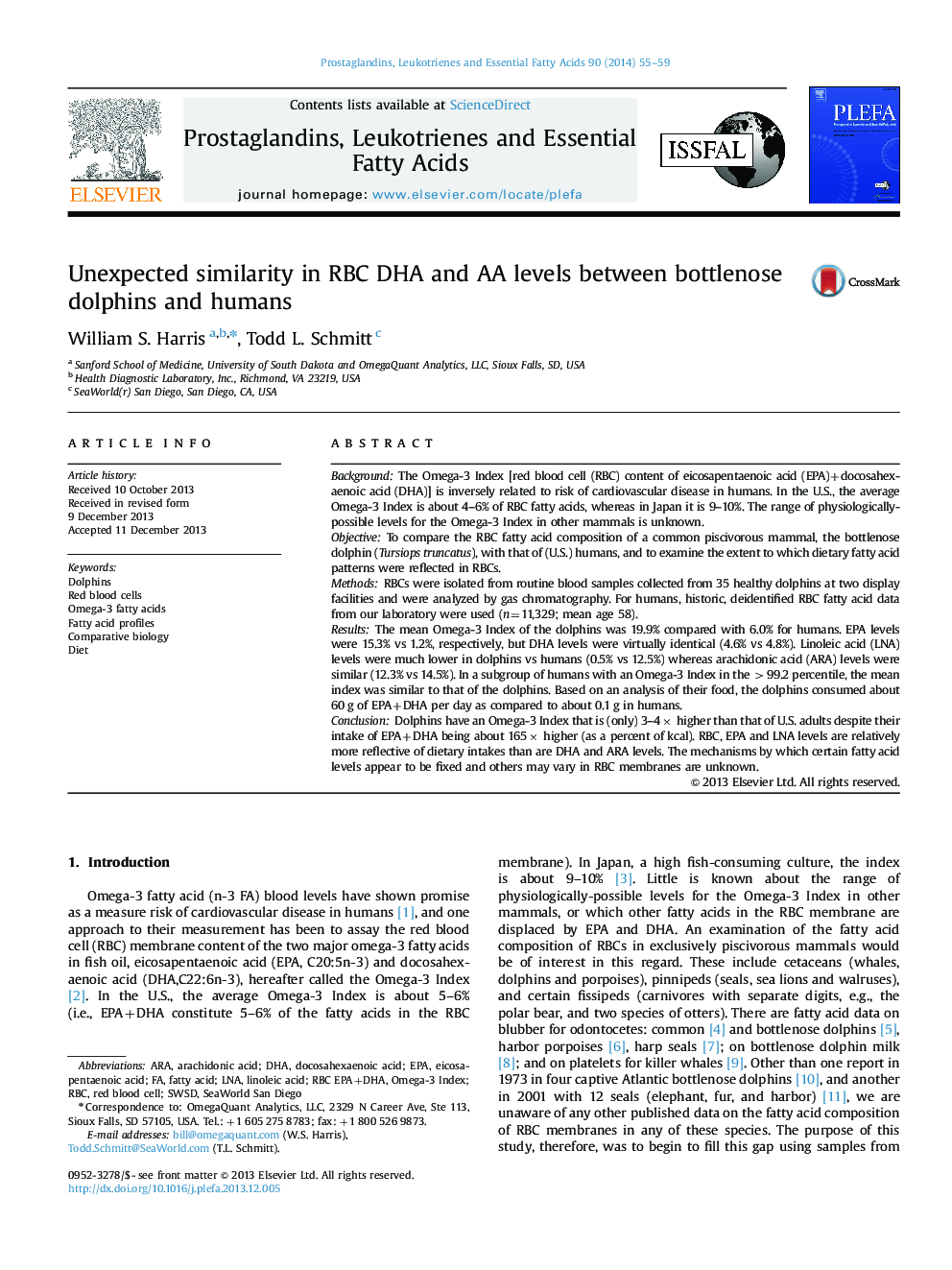| کد مقاله | کد نشریه | سال انتشار | مقاله انگلیسی | نسخه تمام متن |
|---|---|---|---|---|
| 2777622 | 1568029 | 2014 | 5 صفحه PDF | دانلود رایگان |

BackgroundThe Omega-3 Index [red blood cell (RBC) content of eicosapentaenoic acid (EPA)+docosahexaenoic acid (DHA)] is inversely related to risk of cardiovascular disease in humans. In the U.S., the average Omega-3 Index is about 4–6% of RBC fatty acids, whereas in Japan it is 9–10%. The range of physiologically-possible levels for the Omega-3 Index in other mammals is unknown.ObjectiveTo compare the RBC fatty acid composition of a common piscivorous mammal, the bottlenose dolphin (Tursiops truncatus), with that of (U.S.) humans, and to examine the extent to which dietary fatty acid patterns were reflected in RBCs.MethodsRBCs were isolated from routine blood samples collected from 35 healthy dolphins at two display facilities and were analyzed by gas chromatography. For humans, historic, deidentified RBC fatty acid data from our laboratory were used (n=11,329; mean age 58).ResultsThe mean Omega-3 Index of the dolphins was 19.9% compared with 6.0% for humans. EPA levels were 15.3% vs 1.2%, respectively, but DHA levels were virtually identical (4.6% vs 4.8%). Linoleic acid (LNA) levels were much lower in dolphins vs humans (0.5% vs 12.5%) whereas arachidonic acid (ARA) levels were similar (12.3% vs 14.5%). In a subgroup of humans with an Omega-3 Index in the >99.2 percentile, the mean index was similar to that of the dolphins. Based on an analysis of their food, the dolphins consumed about 60 g of EPA+DHA per day as compared to about 0.1 g in humans.ConclusionDolphins have an Omega-3 Index that is (only) 3–4× higher than that of U.S. adults despite their intake of EPA+DHA being about 165× higher (as a percent of kcal). RBC, EPA and LNA levels are relatively more reflective of dietary intakes than are DHA and ARA levels. The mechanisms by which certain fatty acid levels appear to be fixed and others may vary in RBC membranes are unknown.
Journal: Prostaglandins, Leukotrienes and Essential Fatty Acids (PLEFA) - Volume 90, Issues 2–3, February–March 2014, Pages 55–59